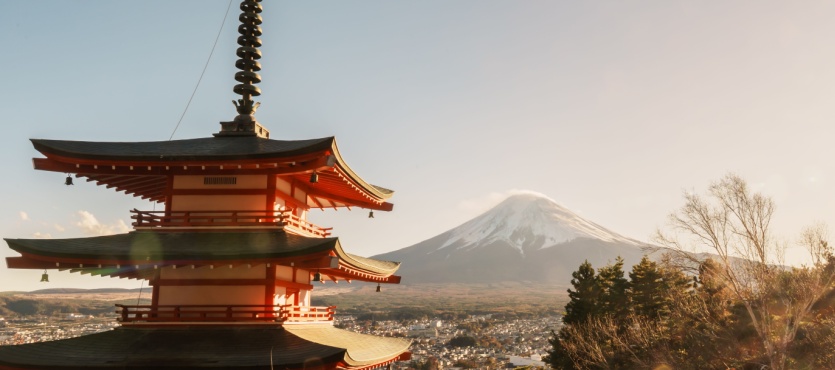In May 2025, Russian President Vladimir Putin and Chinese President Xi Jinping issued a carefully worded joint statement about the deepening military ties between the two countries.
The deletion apparently indicates the Chinese leadership’s attempt to stabilize its relations with Japan, a U.S. security ally, amid an intensifying confrontation between Beijing and Washington.
In the document endorsed by the two leaders during their summit talks on May 8 in Moscow, China and Russia vowed to “further deepen mutual trust and cooperation between their militaries, expand the scale and scope of joint exercises, and organize regular joint sea and air patrols.”
The sources said the draft joint statement originally referred to the two countries’ commitment to “maintaining the security of Northeast Asia,” which could suggest increased joint military activities by them in the vicinity of Japan.
Japan has repeatedly expressed concerns over joint military exercises between the two countries, including concerted bomber flights and warship navigation, near its territory.
Masayuki Masuda, head of the China division at the Tokyo-based National Institute for Defense Studies, said the reference to deeper Beijing-Moscow military collaboration in Northeast Asia “could have triggered a backlash from Japan, the United States and South Korea.”
China probably did not want the document to paint a picture of “a Japan-U.S.-South Korea alliance versus the China-Russia-North Korea camp,” he said.
Russia and North Korea have also been expanding bilateral military cooperation under a partnership treaty signed by Putin and North Korean leader Kim Jong Un in June last year.
North Korea is believed to have received technical assistance from Russia for its military development in exchange for sending troops to aid Russia in its war against Ukraine.
Japan, China, and Russia: A Legacy of Fear
These three countries are a bit like Lisa Simpson, Jimbo Jones, and Nelson Muntz. One of the region’s geekiest countries must live in practicality side-by-side with two of the region’s biggest bullies. Usually, geeks are afraid of bullies, bullies are afraid of geeks, and nobody trusts anyone else.
The fear and distrust in North Asia can be traced to World War II, a conflict that completely reshaped the world in many ways.
In 1936, about five years before Pearl Harbor, Japan launched a major invasion of northeastern China. Its forces soon spread southward and occupied most of eastern China. The occupation was extremely brutal. Imperial Japanese forces used slavery and sexual assault as weapons of war. Several Japanese commanders were convicted of war crimes when World War II ended.
After the war, Japan tried to minimize the atrocities its imperial forces committed. The whitewashing and hand-washing did not sit well with Chinese people who either lived through the war or had friends and relatives who endured Japanese atrocities.
Many people are at least somewhat aware of the Japanese occupation of China. But almost no one knows about the Forgotten Soviet-Japanese War (that is the official name) in 1939.
Border skirmishes in Mongolia between Imperial Japanese and Soviet forces grew into corps-level combat that involved thousands of soldiers. The Japanese inflicted heavy losses on the Soviets during initial attacks in July 1939. But the Soviets rallied and, by the end of August, they completely destroyed all Japanese forces on the Soviet side of the Halha River.
Because they lost so much so quickly, Imperial Japan remained deathly afraid of another Soviet attack. This fear prevented Imperial Japan from invading India and eventually linking up with advancing German forces during World War II. This fear also contributed to Japan’s quick capitulation in 1945.
The capitulation included controversy over the Kuril Islands between Japan and Russia. Japan wants the lush fishing waters, and Russia wants the islands for naval bases.
Once confidence and trust are replaced by fear and mistrust, the relationship is forever broken, at least to an extent. The fear and mistrust that Japan, the Soviet Union (now Russia), and China shared during the war and postwar years have worsened with time.
Private Military Contractors in Japan
Ostensibly to assuage the nation’s fear over renewed conflict with China and the Soviet Union, American forces occupied Japan after World War II. But for various reasons, not the least of which was its use of nuclear weapons, the Americans soon wore out their welcome in Japan.
At the same time, many people in America wanted to stop paying to support a huge military presence in a friendly country in a (relatively) docile region.
No one wanted U.S. troops in Japan, but no one wanted to leave Japan vulnerable to attack. So, whether she likes it or not, Lisa still needs protection against Nelson and Jimbo. As they do in so many areas throughout the world, private military contractors meet this need.
Many PMCs in Japan have indirect combat support duty. They verify IDs at checkpoints and guard military areas. Many regular servicemembers consider these chores punishments. But private military contractors, who are clearly cognizant of their place on the team, embrace them.
These guard duties usually include protecting construction sites. As a showing of goodwill, contractors in Japan often help build or renovate facilities for the Japanese military.
Contractors also provide critical logistical support, mostly in areas like weapons maintenance. North Korea, another neighborhood bully, possesses ballistic missiles that can hit targets in Japan. Private military contractors maintain missile defenses and other systems that cancel out this advantage and deter attacks.
Injury Compensation Available
American contractors in Japan perform these duties, and many more, far from home. But their families back home depend on the money they earn. So, the Defense Base Act’s lost wage injury replacement benefit is very important to the people who rely on contractors. Available benefits categories are:
- Permanent Total Disability: A deployment-related illness, such as toxic exposure, cancer, or trauma injury, such as a fall, could be so severe that the victim is permanently unable to work. In these situations, a Defense Base Act lawyer usually obtains two-thirds of the victim’s anticipated future average weekly wage. Attorneys often partner with accountants and other outside professionals to determine a reasonable sum in these cases.
- Permanent Partial Disability: Frequently, illness and injury victims can work, but their injuries or illnesses prevent them from working full-time. So, the Defense Base Act pays two-thirds of the difference between their actual future wages, which are usually nominal, and their potential future wages, which are usually substantial.
- Temporary Total Disability: TTD may be the largest wage replacement category. Many victims cannot work until they complete medical treatment, including physical therapy. Like permanent disability victims, temporary disability victims usually receive two-thirds of their AWW until they can return to work.
- Temporary Partial Disability: Some victims can go back to work on a limited basis, usually part-time, as they recover, especially after primary medical treatment ends. To soften the financial blow of a substantially lower income and help ensure that the family’s lifestyle is relatively unaffected, these victims receive two-thirds of the difference between their old and new incomes.
Most DBA victims can choose their own doctors and change physicians at any time. So, when their doctors clear them to return to work, they can be sure they’re physically, emotionally, and otherwise ready to get back in the saddle again.
For more information about DBA medical benefits, contact Barnett, Lerner, Karsen, Frankel & Castro, P.A.

